The Archive Image Browser, planetary
science data for everyone to enjoy
This is one of the most
popular ESDC services, providing images of Solar System
objects from ESA planetary missions to all types of
users
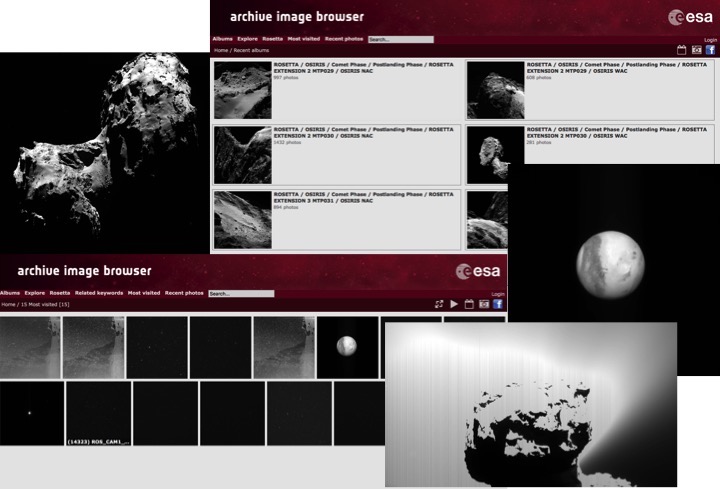
Missions exploring the Solar System provide a
wealth of images that are interesting not only for scientists,
but also for the general public. However, the use of the Planetary
Science Archive requires some knowledge of the missions
and their data that is beyond reach of most non-science users.
For this reason, the ESDC has developed the Archive
Image Browser, a service providing images from planetary
missions for non-experts.
Users of the Archive Image Browser can explore the several
image albums available, including the most visited and the
most recent images. An advanced search interface is also
provided, where they can perform searches based on specific
keywords, author names, post date or creation date. Users can
then download their favourite images or share them in social
media. The service is very popular, with monthly averages of
about 1,500 users and 10,500 pages viewed.
On April 24, the Archive Image Browser experienced a peak of
30,000 users in one day, probably related to the publication
of an animation created from Rosetta
images of comet 67P/Churyumov-Gerashimenko that became
trending topic on Twitter. A proof of the interest of the
general public on this kind of visual applications.
Members
of the Archive Image Browser development team: I. Barbarisi,
J. González, C. Ríos
Images: ESA/ESDC
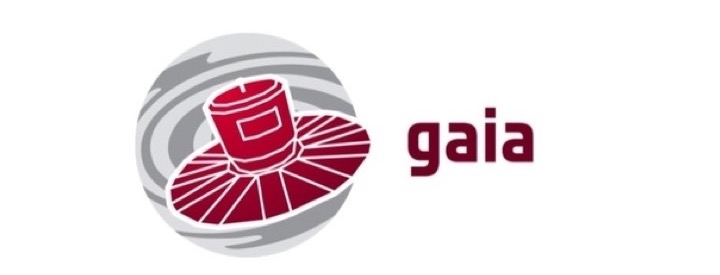
The Gaia Archive registered in April the largest number of users ever seen at the ESDC, with peaks of up to 1,700 new users per hour. Virtual Observatory technologies were key in this success.
Full story
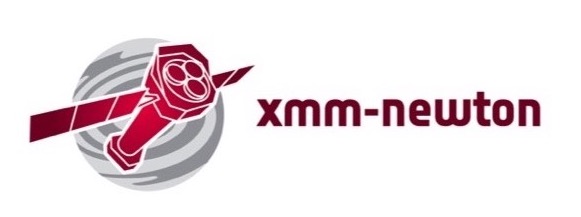
This version includes a new image viewer for interactive analysis and the new release of the 3XMM catalogue, among other improvements.
Full story
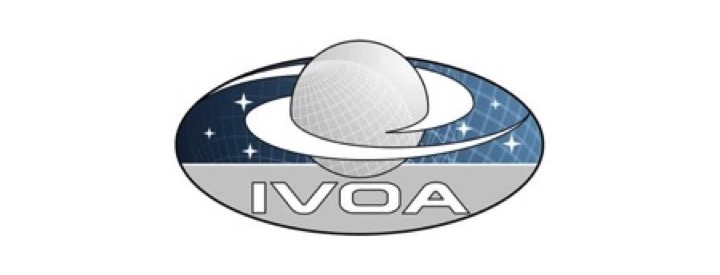
The next Interoperability
Meeting of the International Virtual Observatory
Alliance will take place in Victoria (Canada) from May
27 to June 1, 2018, with strong presence of the ESDC.
Full story
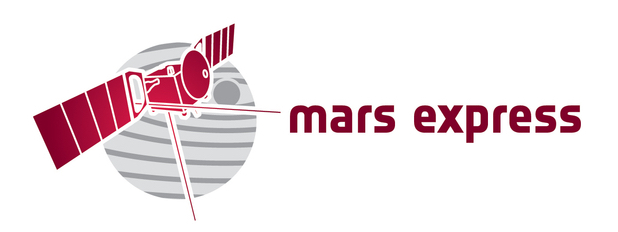
Data from four instruments (MARSIS, OMEGA, HRSC and ASPERA-3) were delivered to the archive in March and April
Full story
The Gaia Science Archive and the Virtual Observatory: A two-way success story
By J. González & D. Baines

On April 25, at 12:00 sharp, thousands of astronomers worldwide logged into the Gaia Archive, or searched for “Gaia DR2” in TOPCAT and selected ESA or another one of the available data services, with the purpose of performing significantly complex queries over the impressive 1.7 billion source catalogue. But very few were aware that perhaps the most intensive and decisive operational test since the creation of the Virtual Observatory in 2002 was running at that precise moment.
And it was a successful test. The VO behaved as good technologies should behave: transparent to the users, empowering them to do more and reach further without even noticing the complexity of the standards and technologies behind the interfaces.
The use of a common, worldwide known open standard that is accepted by all services, the Astronomical Data Query Language (ADQL), allows users to concentrate on the immense potential of this dataset, built upon decades of effort of the Gaia Mission and the Gaia Data Processing and Analysis Consortium (DPAC).
Many users decided to use the ESA Gaia Archive interface, interfaces of partner data centres, other VO tools, or the specifically developed Python Astroquery Gaia library. Usage numbers for the first week speak for themselves: 34,000 users accessing the ESA Gaia Archive interface, with peaks of 1,700 new users per hour; over 5,000 users sending more than 1,5 million data analysis queries, and a total retrieval of 118 Terabytes of data. These are the largest numbers ever seen so far for any ESA science archive.
The VO-orientation of the Gaia Science Archive is the result of the many years of involvement of the ESA Science Data Centre (ESAC) in the International Virtual Observatory Alliance (IVOA) and of the contributions through the
Gaia DPAC of many partners and experts. VO technologies are now "release proven" (i.e. can accept very large
peak loads), combining reliability with functionality, and making them
an attractive option for future missions.
 Members of the Gaia Archive development team:
J. Salgado, J. González, R. Gutiérrez, J.C. Segovia, J.
Durán, E. Racero, P. de Teodoro
Members of the Gaia Archive development team:
J. Salgado, J. González, R. Gutiérrez, J.C. Segovia, J.
Durán, E. Racero, P. de Teodoro
Images: ESA/ESDC
New version of the XMM-Newton
Science Archive: Improved interactive analysis and new catalogue data
By N. Loiseau, M. H. Sarmiento & B. López Martí
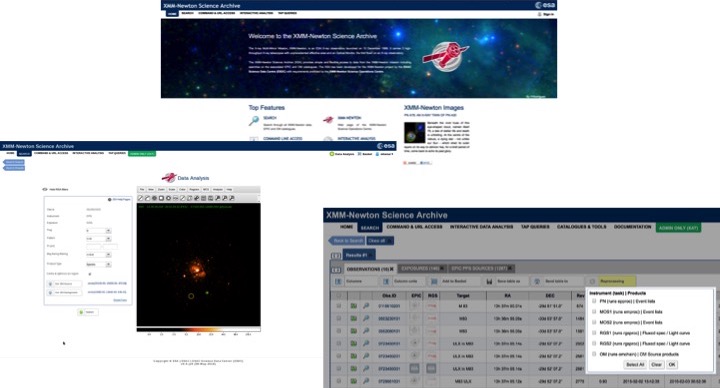
Since May 16, interactive analysis of data in the XMM-Newton
Science Archive (XSA v10.0) is much more straightforward than in previous versions, thanks to the new image viewer integrated in the Remote Interface for Science Analysis (RISA) in the latest version of the archive (version 10.0). This image viewer, JS9, is a light version of DS9 that allows users to visualise and manipulate astronomical data in their browser.
This new version of the XSA also features the latest incremental release (DR8) of the XMM-Newton EPIC Serendipitous Source Catalogue (3XMM),
based on public observations up to November 2017 in the energy range 0.2 to 12 keV. The catalogue covers a total sky area of about 1089 square degrees, and it includes 775,153 X-ray detections from 531,454 unique X-ray sources. This represents an increase of approximately 7% in the numbers of unique sources with respect to the previous release (DR7), dating from June 2017.
In addition, XSA v10.0 gives for the first time access to the
Radiation Monitor files, allowing users to select and download those
data. This version provides improved searching functionalities
and a new design of the archive home page.
Members of the XSA development team: M. H.
Sarmiento, E. Colomo
Image: ESA/ESDC
The ESDC in the International
Virtual Observatory Alliance
By D. Baines & J. Salgado

The International Virtual Observatory Alliance
(IVOA) is a worldwide organisation aimed at enabling
global and integrated access to astronomical data. It achieves
this by debating and writing the technical standards and
protocols that are needed to make the Virtual Observatory (VO)
-the vision that astronomical datasets and other resources
should work as a seamless whole- possible.
Members of the ESDC, representing ESA, have been involved in
the IVOA since it first formed in 2002. Standards that have
been co-written by the team include the access to
spectroscopic data, spectral line databases, a data model for
photometric data, the Astronomical Data Query Language (ADQL)
for querying astronomical databases, the access to sky survey
data, amongst others. Furthermore, the ESDC has actively
implemented those standards to create VO-enabled archives and
applications, making VO a reality for the science community.
Currently, most of our new archives are using a VO-compliant
architecture.
The IVOA meets every six months at the Interoperability
meetings to discuss and develop the VO standards and VO-based
applications. The Northern Spring 2018 Interoperability
meeting is being held on 27th May to 1st June in
Victoria, Canada, and is being hosted by the Canadian
Astronomy Data Centre (CADC). As usual, members of the ESDC
team will be attending the upcoming meeting, will present
recent work, and will represent the ESDC and ESA in the
Executive Committee, the Committee on Science Priorities and
the Media Group.
Image: IVOA/CADC
New Mars Express data in the Planetary Science Archive
By B. López Martí & E. Grotheer

The Mars Express instrument teams continued delivering data to the Planetary Science Archive in March and April. New data on the composition and structure of the red planet are now available, including new raw subsurface data from the Mars Advanced Radar for Subsurface and Ionospheric Sounding (MARSIS) and new OMEGA (Observatoire pour la Minéralogie, l'Eau, les Glaces et l'Activité) raw data until June 2017, as well as radiometric data taken with the High Resolution Stereo Camera (HRSC) up to October 2016.
New ASPERA-3 (Analyser of Space Plasmas and Energetic Atoms) raw and calibrated data covering up to June 2017 have also been released. The goal of this unique instrument is to study the interaction between the solar wind and the martian atmosphere, with the ultimate goal of finding the answer to the problem of the lost water on the Red Planet.
Image: ESA







 Members of the Gaia Archive development team:
J. Salgado, J. González, R. Gutiérrez, J.C. Segovia, J.
Durán, E. Racero, P. de Teodoro
Members of the Gaia Archive development team:
J. Salgado, J. González, R. Gutiérrez, J.C. Segovia, J.
Durán, E. Racero, P. de Teodoro 

